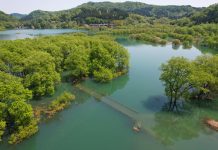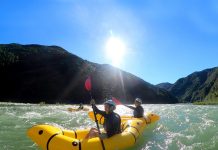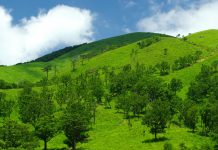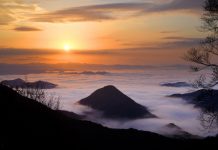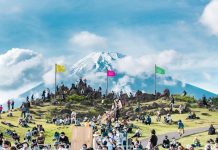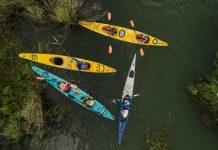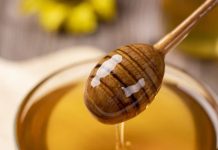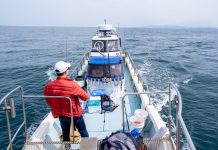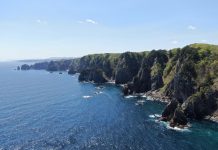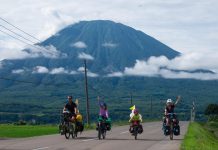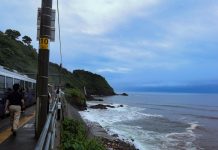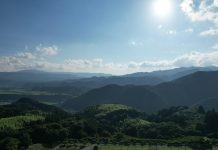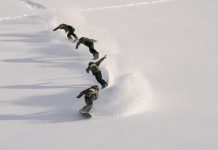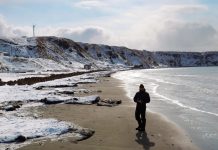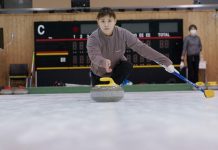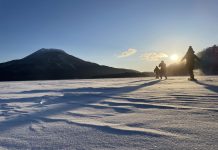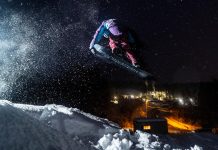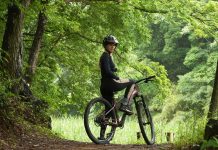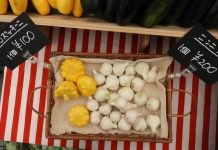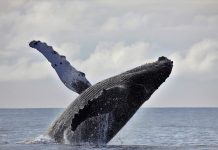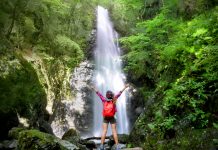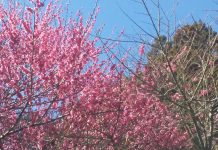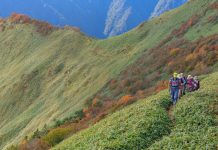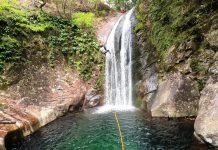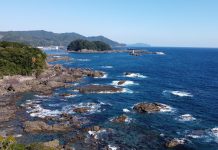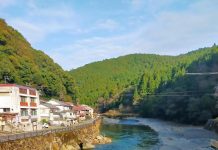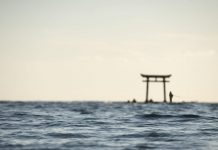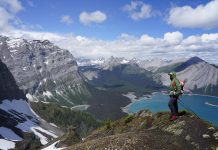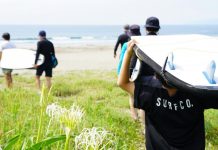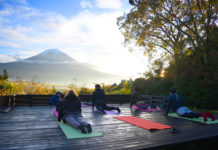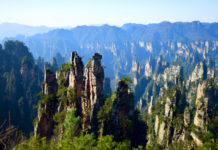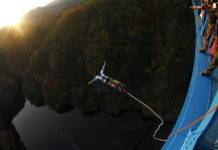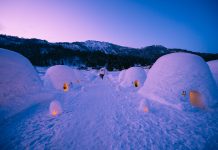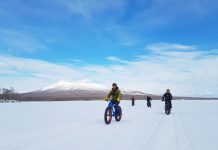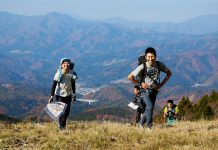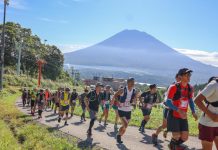A few hours from the crowds and concrete of Tokyo is a small river where, over the last few years, I have consistently landed a dozen or more salmon in a day—and was still home for in time for dinner.
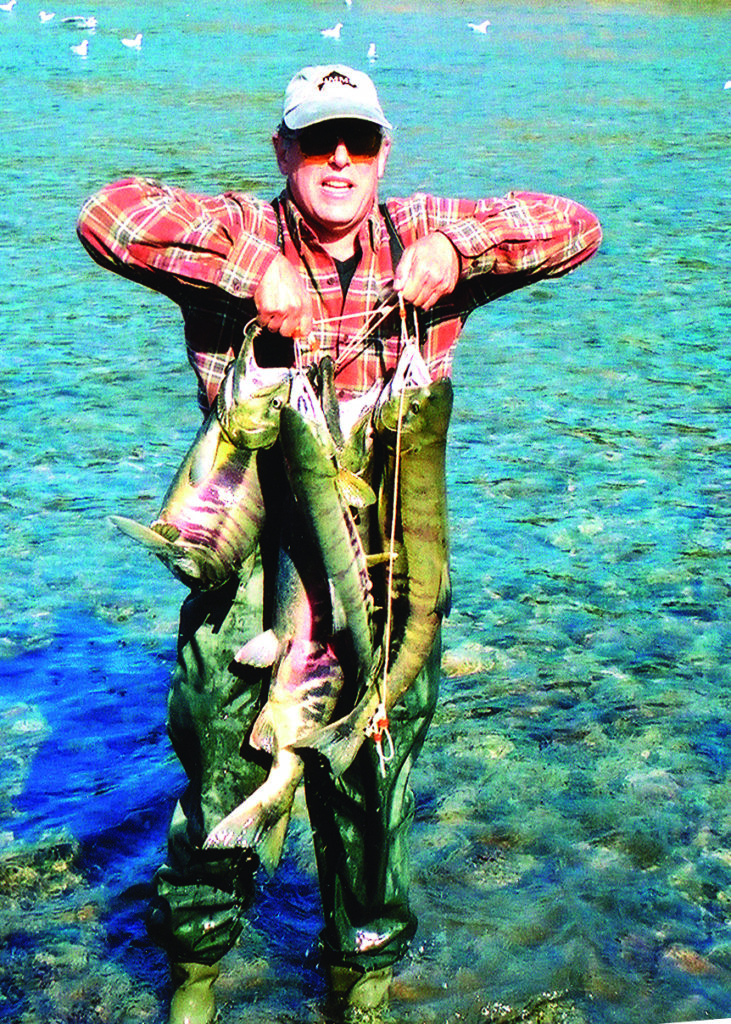
On a two-day fly fishing trip in October to Fukushima Prefecture’s Kido River, I caught 26 salmon ranging in size from three to 6.4 kilograms. Salmon are plentiful in Japan, but places where you can legally fish for them are not.
Salmon can be found along much of the coast of the Sea of Japan. On the Pacific-side, they range from Ibaraki north through Hokkaido. However, you will not need all of your fingers to count the rivers that allow sports fishermen to catch salmon. In this nation of fish-eaters, salmon are a closely guarded resource.
Size-wise the Kido is more of a trout stream than a salmon river. The area open for fishing is closely controlled by the local fishermen’s cooperative. The angling section begins 200 meters from the mouth and stretches for 700 meters, ending 200 meters before a weir. The weir is a small dam which stops all salmon from moving upstream to spawn.
There is very little natural reproduction of salmon in the Kido River. The salmon in the river are products of the fishermen’s cooperative’s hatchery. Instead of the few thousand salmon this small river might be able to produce naturally, tens of thousands return annually.
When sport fishing ends at 2 p.m., commercial fishermen seine the river with nets to harvest the fish. All the salmon in the river are chum salmon, the most common type of salmon in Japan.
The chum salmon is a fish of many names. In Japanese they are called sake, shake, shirozake and akiaji. In English they are chum, calico, or dog salmon. Ocean-bright chums have dark greenish-blue backs and silvery sides. In fresh water they transform.
Spawning fish are colored with irregular blotches of brick red, yellow and black. Their heads are greenish-brown with yellow on the cheeks. The males develop hooked jaws with a series of large protruding teeth. These teeth are proportionally larger than in any other variety of salmon. Grab a chum salmon by the tail, not by the jaw as many anglers do with bass.
The Kido River has some special rules. Bait, lure and fly fishing are all allowed, but only single hooks are permitted. There is no catch and release. All catches are weighed, measured and recorded by wardens who patrol the riverbank with a scale, measuring board and a wheelbarrow.
Anglers may keep two male fish per day. All females and any males the fisherman does not want are taken away in the wheelbarrow to be processed and sold. Although not strictly enforced, the rules for the river also state you are only allowed to land five fish a day.
Bait fishing and lure fishing are the most popular and usually the deadliest methods for catching fish. For me, however, fly fishing is the way salmon should be caught. I find it far more interesting and challenging and, under the right conditions, just as effective.
The upper stretch of the Kido River’s fishing area is normally ideal for fly fisherman. A meter or less of crystal clear water in which an angler can sight cast to waiting schools of salmon. On this trip the water was higher than usual and discolored because of a typhoon a week or so earlier. Red is the most popular fly color on Japanese salmon streams, but not this time. The fish only showed mild interest for the red, black or purple colored patterns that had worked so well in the past.
I got some results with old reliable patterns, but it wasn’t until I finally dug out the gaudiest, most audacious fly I had, a Hot Pink Bunny Bugger, that things got exciting. The name sounds more like the sexual preference of a U.S. senator than a pattern for a fishing fly, but it was my magic bullet. The salmon could not leave it alone.
I had to keep sharpening the hook, because the point was being dulled from the constant action. I was only able to land a fraction of the fish that hit. I had a great time until, as I was trying to land a large fresh-from-the sea salmon, it snapped the hook of my wonder fly in two.
Atlantic salmon flies are made from expensive exotic feathers and furs. They have names such as General Practitioner, Green Highlander, Blue Charm and Silver Doctor. Patterns for Pacific salmon and steelhead reflect a rowdy frontier heritage, with names such as Showgirl, Outrageous, Streetwalker, Zonker and—my favorite—the Purple Egg-sucking Leech.
The best Pacific salmon flies are made of soft material such as turkey marabou of strips or rabbit fur that move and pulsate in the water. Often a few strands of tinsel or Krystal are added for extra attraction. A little wiggle and a little flash; they work pretty damn well on me, and they work on salmon, too.
The key to catching salmon on a fly is to drift the fly right in front of the fish, hit ’em in the nose if you can. Once salmon enter a river, they soon lose interest in feeding and strike out of territoriality, aggression or just reflex. The angler needs to use sinking line, and if the current is strong, it might mean adding some split shot to get the fly down to where the fish are.
Line control is far more important than casting far. Keep a tight line. Salmon don’t always hit hard. If your fly stops, or if you feel a tap, set the hook. It might be a fish.
Try casting repeatedly to the same fish or same area. If a salmon sees the fly often, it might move away, or the fish just might just get annoyed enough to strike.
Right now the Kido River probably offers your best bet to catch a salmon in Japan without the expense of traveling to Hokkaido. The number of rivers allowing salmon fishing is likely to continue increasing.
Chum salmon begin their seaward migration soon after hatching which makes them one of the least expensive salmon to produce, and Japanese hatcheries are raising them by the millions. In Japan a mature salmon will have a market value of about ¥1,000. If it was landed by a sports fisherman, the angler likely spent ¥10,000 or more to finance the catch.
Tackle, transportation, fishing permit, accommodations, meal, and the mandatory omiage gifts all add up to a nice boost for the local economy. In his classic story of family and fishing, “A River Runs Through It,” Norman MacLean wrote, “I am haunted by waters.” I too am haunted by waters, and mine teem with salmon. Maybe I’ll see you on the Kido River next year. I’ll be the one with the happy look on his face and the big fish.
Essentials
The Kido River is open for sport fishing from the first week of October through the first week of November. The hours for fishing are from 7 a.m. to 2 p.m.
The application period for permits is from the second week of July through the second week of August. The cost of a permit is ¥6,000 for one day or ¥10,000 for two days. Only 40 anglers a day are allowed, so it is best to apply early.
Lodging ranges in price from ¥4,200 to ¥9,000 a night. If you like Japanese-style food and accommodations, I can recommend Kashiwaya (tel. 0240-25-2323). The cost is ¥7,300 a night including a breakfast and dinner that features some special local dishes.
Getting to the Kido River is fairly straightforward. If you are traveling by car, take the Joban Expressway to Hirono, and then take Highway 6 to the river. The fishing area is about eight kilometers from the expressway. To get there by public transportation, take the Joban Line to Kido. The river is about a five-minute taxi ride from the train station or around 25 minutes on foot.
Fishing in Japan
Fishing is a popular pastime here in Japan. There is ample information available on TV, in print media and the Internet, but it’s all in Japanese; therefore Japanese friends and acquaintances can be helpful in getting started.
Even for a veteran angler, fishing in Japan can be a learning experience. Most lure and fly fishing here is similar to overseas, but bait fishing is a different story. There are a lot of techniques uniquely Japanese, and they can differ from region to region.
The Kido River is limited to 40 anglers a day, but other popular fishing spots can be crowded, so it is important to observe good manners. You can find remote and empty fishing spots, but often it’s a group experience. Tangled lines are inevitable, but they are also a chance to meet people and make friends with fellow anglers.

